Cellere, overlooking the Maremma Laziale from a tuff spur, is one of the Cities of Olive Oil (EVO Canino DOP), and the hometown of the renowned bandit Domenico Tiburzi, born in the hamlet of Pianiano.
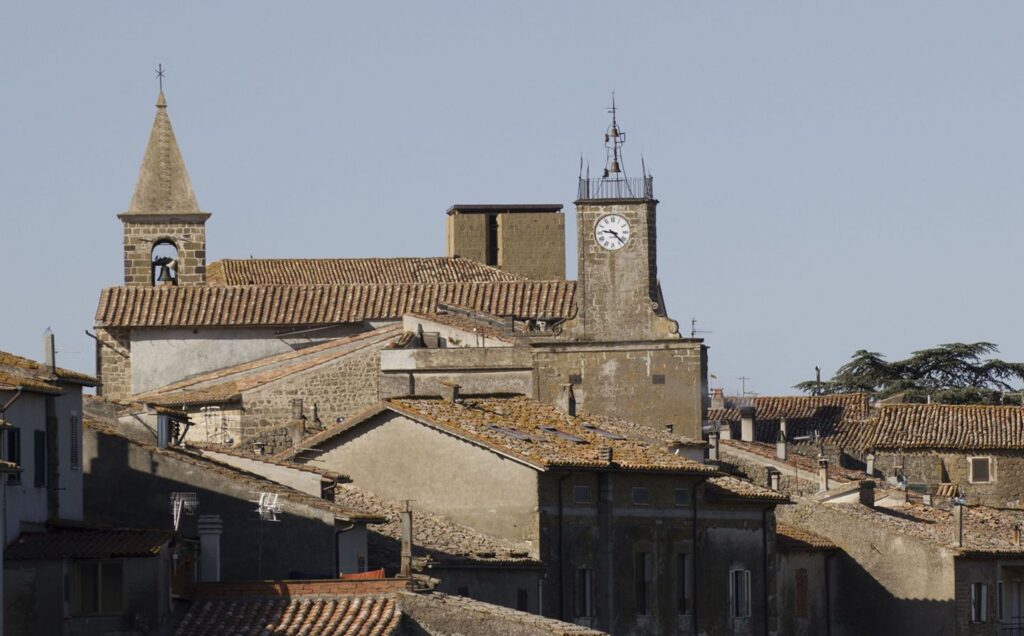
Cellere – Facebook @prolococellerevt
The village probably owes its name to the ancient Roman settlement of Cellae Cerris.
It reached its heyday under the Farnese Family in 1300, as testified by the Palazzo Farnese and the Church of Sant’Egidio Abate. In 1500, Cellere belonged to the Duchy of Castro, at the end of the 1700s it passed into the hands of the Marquis Casali Patriarca, and finally it was annexed to the Kingdom of Italy.
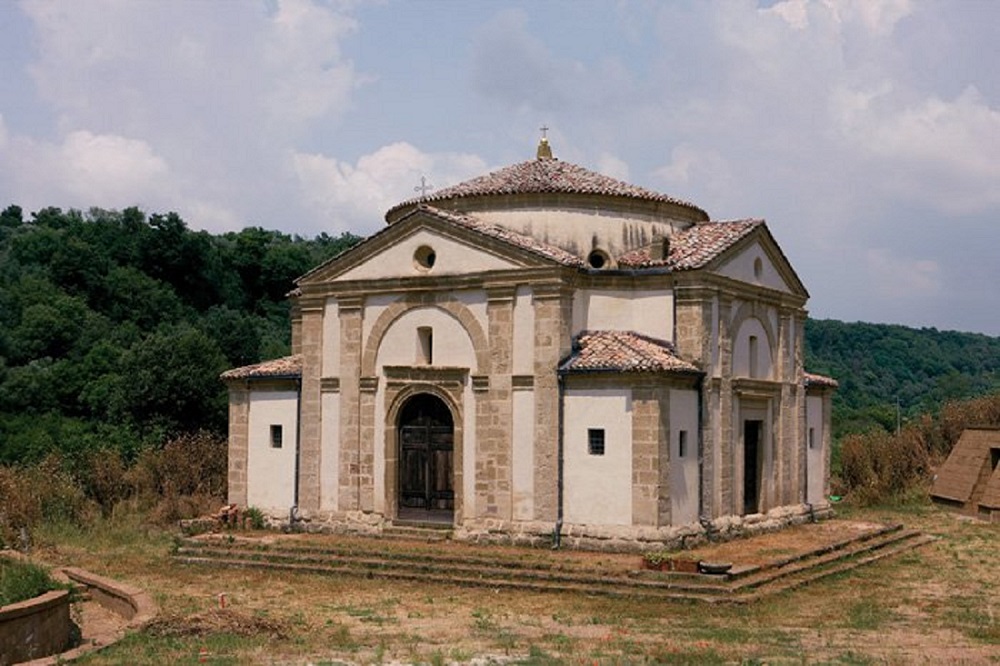
The Church of Sant’Egidio
The Church of Sant’Egidio Abate was commissioned by Cardinal Alessandro Farnese to Antonio da Sangallo the Younger. This early sixteenth-century Renaissance jewel features a Greek cross layout and houses precious sixteenth-century frescoes and a spectacular hexagonal floor.
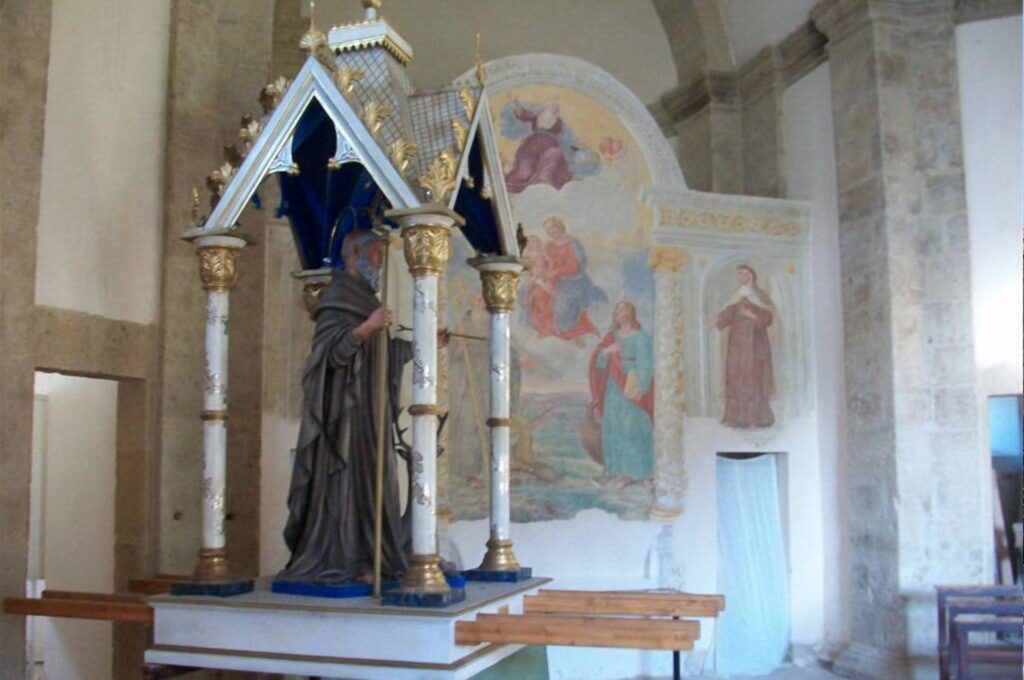
The Church of Sant’Egidio – Facebook @ComunediCellere
The church is dedicated to the patron saint Sant’Egidio, celebrated on September 1 with a solemn procession and the preparation of the famous biscuits of Saint Egidio. According to tradition, the Saint lived as a hermit in a forest near Arles in France, only feeding on the milk of a doe, his travelling companion. For this reason, the village banner depicts this animal surmounted by three golden lilies, the symbol of the Farnese Family.

The Museo del Brigantaggio is dedicated to the famous figure of Domenico Tiburzi, known as “Domenichino” or “Re Lamone”. Already a bandit at the age of fifteen, he was born from a poor family in Pianiano, a hamlet of Cellere, and became the leader of the Lamone gang. His deeds followed the code of honour of stealing from the rich to give to the poor, and never touching the Carabinieri, he considered victims of the system.

The Museo del Brigantaggio is part of the Lake Bolsena Museum System (Simulabo). It narrates the history of the Maremman banditry in the second half of the nineteenth century through audio and video installations, such as drawers, trapdoors, hiding places, books and filing cabinets, as well as newspapers, period cartoons, stories, poems, and songs.
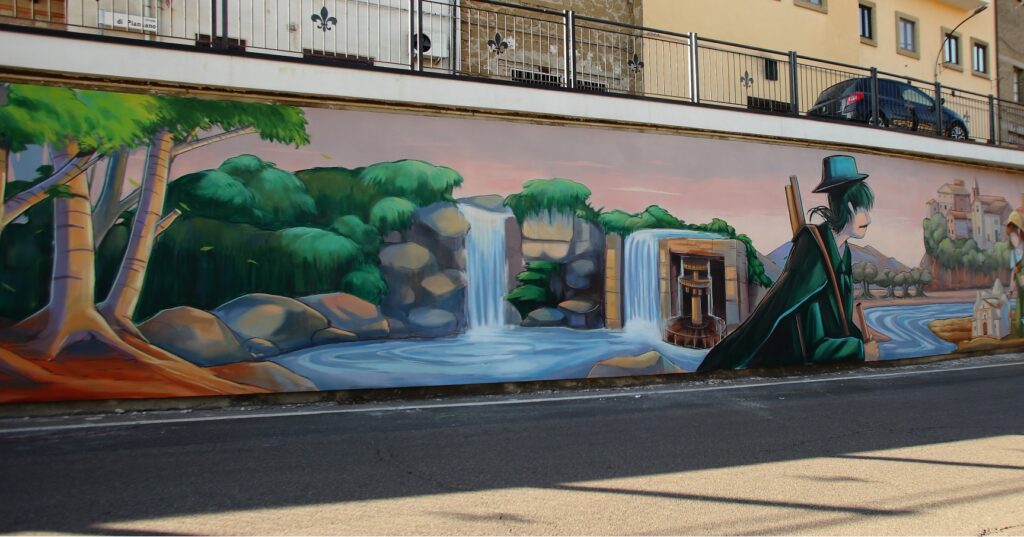
A mural by Alessandra Carloni – Facebook @ComunediCellere
Not to be missed in Cellere is the mural “La Via dei Briganti”, by the street artist Alessandra Carloni, which depicts Domenichino on a fairytale background between past and future.

The Grotta della Mercareccia – www.simulabo.it
The bandit Tiburzi and his companions used to hide inside the Grotta della Mercareccia, or Grotta Tiburzi, along the Bandit Trail in the Springs Park of the Timone, a tributary of the Fiora River. Here, among oak trees, flows an impressive waterfall flanked by the ancient hydraulic pumps that once supplied Cellere and the Tiburzi Cave.
Over 1,000 species of plants and flowers grow in this forest, included the rare Etruscan artemisia and the cotton lavender, as well as thirty-nine species of wild orchids, such as the precious Ophrys insectifera.
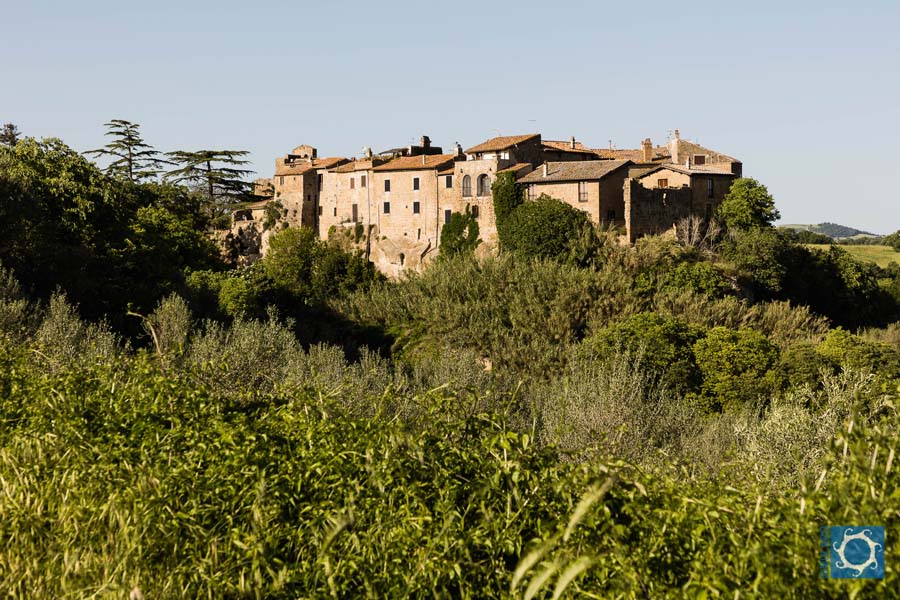
The hamlet of Planiano, a fiefdom of the Orsini Family within the castle walls, was donated as a dowry to Girolama upon her marriage to Pierluigi Farnese, thus becoming a property of the Farnese Family. A part of it remained to the Duchy of Castro.

Pianiano, a hamlet of Cellere
The early-medieval Church of San Sigismondo Martire in Pianiano preserves the painting of the “Madonna degli Albanesi”, which commemorates the two hundred Christian refugees from Ottoman Albania, who repopulated Pianiano in 1700, after a century of abandonment. The Albanians cleared and renovated the decaying village until, in the mid-1900s, the land was also reclaimed.
In July, Pianiano hosts the festival MUSA (Musica Spettacolo Arte Artigianato), a blend of music, art, and entertainment. The calendar of musical events includes opera, chamber music, jazz, folk, blues, and rock performances. In addition, several theatrical pieces are staged in the natural setting of the village.
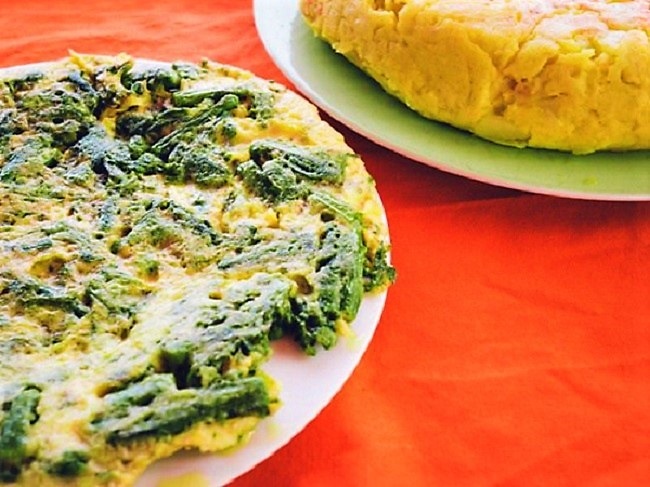
Omelette with Canino Green Asparagus PGI
Cellere, where the Canino DOP extra virgin olive oil is produced, is a member of the Associazione Nazionale Città dell’Olio. Another renowned local product cultivated in this area is the Asparagus PGI, with its unmistakable bright green colour.
